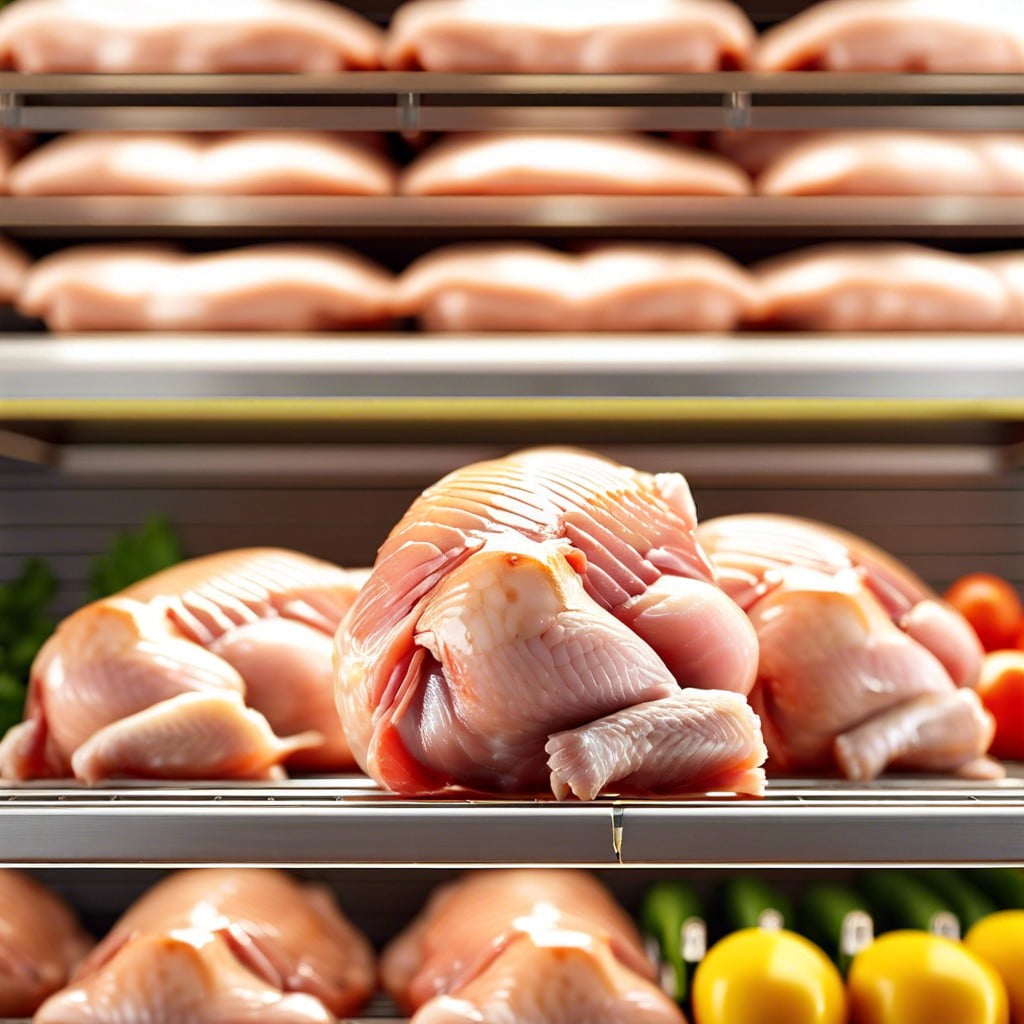Learn the steps to barbecue chicken thighs to perfection with smoky flavor and juicy results.
Key takeaways:
- Select chicken thighs of the same size for even cooking.
- Dry-brine thighs with salt for maximum flavor.
- Grill at a medium temperature of 350 to 375 degrees Fahrenheit.
- Use a meat thermometer to ensure chicken reaches 165°F.
- Clean the grill to maintain its performance and longevity.
Selecting the Right Chicken Thighs

Opt for chicken thighs that are approximately the same size to promote even cooking. Skin-on, bone-in thighs generally offer more flavor and moisture retention than their boneless, skinless counterparts. Darker meat like thighs forgivingly remains juicy over the heat, a boon for both novice grillers and seasoned pitmasters. If possible, source your thighs from a reliable butcher known for quality poultry; it can truly elevate your BBQ game. Lastly, give organic or free-range options a nod if flavor purity and ethical sourcing are on your radar.
Preparation of Chicken Thighs
Dry-brining is your secret weapon for maximum flavor. Sprinkle the thighs liberally with salt hours before they hit the grill, allowing the seasoning to penetrate deep into the meat. For enhanced taste, consider a dash of sugar in the mix—it aids in caramelization and creates a mouthwatering mahogany finish.
Membranes and excess fat are flavor foes. Trim them away to promote even cooking and to ensure the savory smoke can work its magic without greasy interference. Picture a lean canvas ready for a smoky masterpiece.
Lastly, slather your thighs with sanctuary—rub or marinade—for a flavorful shield against the sizzling heat. Bold spices and aromatic herbs form a crust you’ll crave, so don’t be shy. Aim to marinate for at least an hour, playing the long game for the juiciest outcome.
Managing Grill Temperature
Steady heat is the secret sauce to perfectly grilled chicken thighs. But how hot is hot enough? A medium setting, around 350 to 375 degrees Fahrenheit, hits the sweet spot. It’s hot enough to crisp the skin without burning it to a cinder.
Here’s the lowdown: if your grill doesn’t have a built-in thermometer, don’t sweat it. A simple hand test works wonders. Hold your hand about five inches above the grill. If you’re yanking it away after five seconds, the heat’s just right.
Now, don’t let flare-ups crash your BBQ party. Chicken thighs love to drip fat, which can cause flames to leap like acrobats. Got a flare-up? Just move the thighs to a cooler part of the grill. That’s your safety zone, there to save your skin—chicken skin, that is.
Remember, the goal is even cooking, not a game of chicken with the flames. Keep that lid down to trap heat and smoke, which are the dynamic duo of flavor. This also prevents temperature spikes that could turn your thighs from delicious to disastrous.
And if you’re rolling with charcoal, let’s not play favorites. Pile the coals on one side for a hot zone and no coals on the other for a cooler zone. Bam! You’ve got a grill that multitasks—sear on the hot side, then move to the cool side to let the inside catch up.
Just like a good pitmaster, always stay attentive. Monitor the heat and adjust as needed. Your reward? Chicken thighs that are crispy on the outside and juicily tender on the inside, ready to tango with any side dish.
Checking Doneness With a Meat Thermometer
Poking a thigh with a fork and hoping for clear juices to run out is like trusting a weather forecast to plan a picnic—risky. Instead, a meat thermometer is your best pal, ensuring your chicken hits the golden number: 165°F. Slide the thermometer into the thickest part of the thigh, avoiding the bone, for an accurate reading. Remember, temperature continues to climb a few notches even after you pull the meat off the heat, so sometimes it’s wise to take it off the grill at 160°F and let it rest. This pause lets the heat distribute evenly, tenderizing your meal and keeping the “dreaded dry-out” at bay.
Keep a close eye on that dial—once you’ve mastered this step, you’re well on your way to becoming a chicken thigh virtuoso.
Cleaning the Grill After Cooking
Once those chicken thighs emerge sizzling and savory from the grill, a little post-grill grooming is in order. A clean grill ensures your next barbecue is just as successful without any lingering flavors or unwelcome guests (hello, old charred bits).
First, while the grill’s warmth still lingers, grab a wire brush and give the grates a good scrub. The heat has already loosened the grip of any leftover particles, making your job easier. For stubborn gunk, a dash of high-heat cooking oil on a crumpled piece of aluminum foil can work wonders when rubbed over the grates.
Next, once everything’s cooled down, it’s advisable to tackle the grease tray. Slide it out and dispose of the cooled grease—your future self will thank you for preventing any flare-ups or unnecessary smoke the next time around.
Last**l**y, don’t forget a quick wipe-down of the exterior. A mildly soapy rag followed by a clean, damp one will do the trick to keep the grill looking as good as the day you first met. Just like your cooking tools, your grill is an investment worthy of protection! Keep it in top-notch condition, and you’re setting the stage for many more barbecue triumphs.

